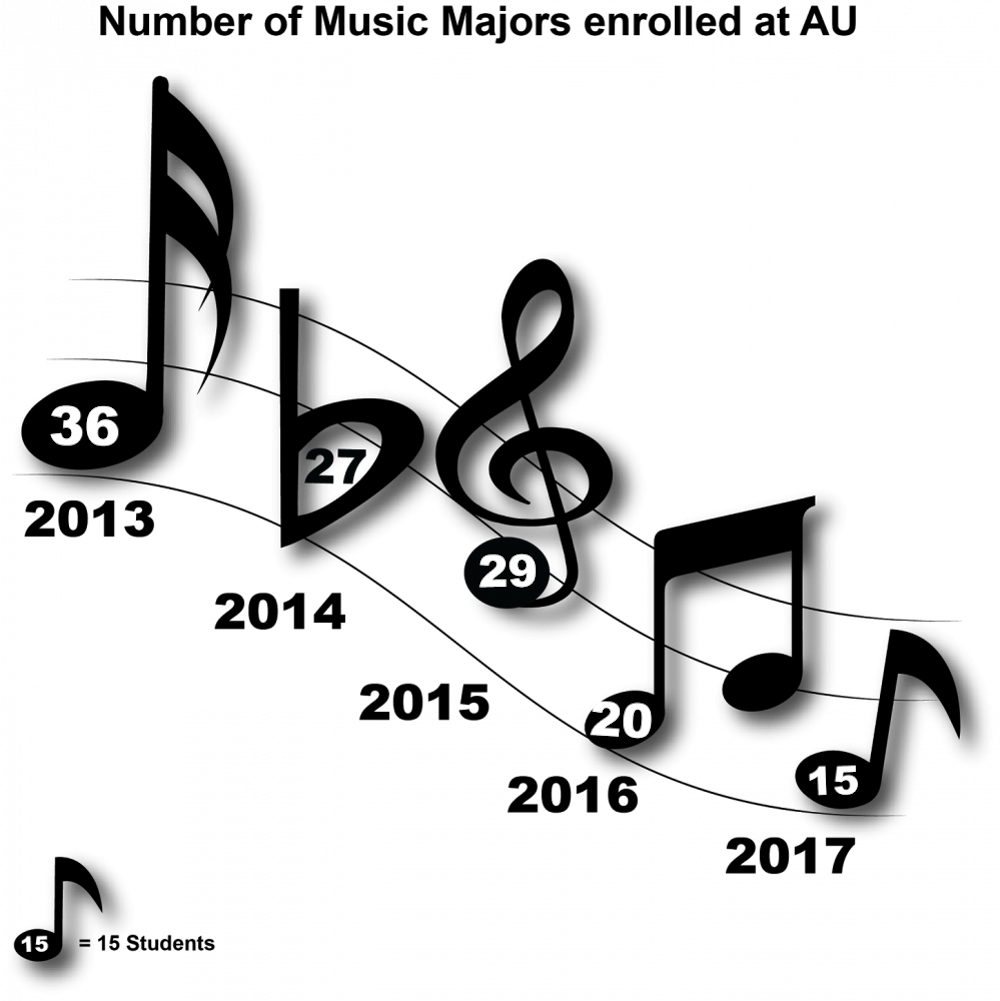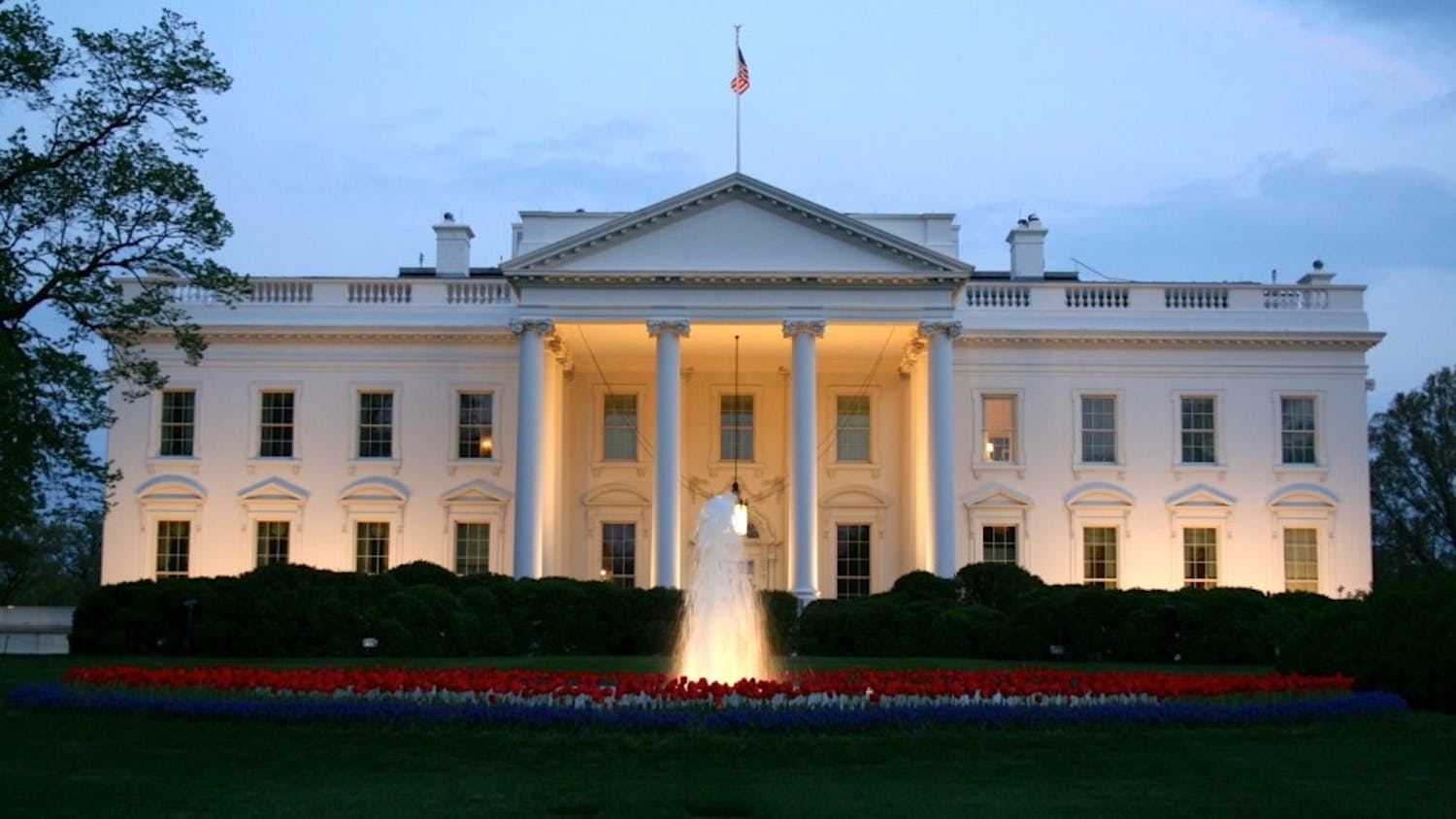The number of music majors at the University has decreased by about 64 percent over the last five years, according to the Office of Institutional Research and Assessment (OIRA). In 2012, 43 students were enrolled as music majors. In 2017, 15 students are enrolled.
Now, students and faculty in the department are looking to recruit more music majors. The lack of majors this year will ultimately mean change for the recruiting and enrollment process within the music department.
“We’ve enjoyed great prosperity for many years and the fact that our numbers are a little bit down is just part of a cyclical, natural flow,” said Nancy Snider, director of the music program.
Sean Doyle, a music and composition professor, said that he noticed the number of students enrolled is lower than in the past. Doyle began teaching at the University in August 2015.
However, like Snider, Doyle said this is not a crisis. Rather, “it is just that, in this moment, our numbers happen to be lower than when I was first hired.”
Snider said the issue is not specific to the University, but that student enrollment for arts across the country is decreasing as well. She said that lack of targeted recruitment and adjustments to teaching methods may have contributed to the decline.
Students are involved in the department, Snider said, but not as many are majoring in music. According to OIRA records, over the last five years the number of minors within the department has fluctuated between as little as three minors in 2015, and as many as 13 minors in 2017.
“Here at AU, we need to do more targeted recruitment internally,” Snider said. “This means finding students within the University who have a passion for music and who want to commit by majoring in it.”
Snider said the current recruitment process involves a student initially expressing interest. Then, the department emails and communicates with the prospective student to set up an audition and meeting times with the faculty. The problem is that not every student who expresses interest in the program is automatically connected with the music department, Snider said.
“We need every student who has an interest in music who fills out the Common App to be sent to us. I don’t feel that that’s happening,” Snider said, “Generally, we just need more communication with students who have musical interests as soon as they apply to the University so that we can build a relationship.”
Placing the music department in Katzen Arts Center -- far from the main quad -- also creates a division between the music department and the rest of campus, Doyle said.
“Part of our responsibility as faculty is to be aware of the fact that this problem is not unique to AU and to see how other programs like ours are dealing with it and then, if we are not doing those things, finding a way to do them,” Doyle said.
Nina Larson, a vocalist and music major, said she was not surprised that the department was struggling to recruit new students because of the career opportunities associated with music.
“It is difficult to find success in the music industry without following along the path to grad school, and this prospect is scary to students who are passionate enough about music to take it on as a major,” Larson said.
Christian Kahn, an audio tech major, said he did not expect a decline in students because the Katzen Arts Center is a “great facility for the music department” with “an abundance of practice rooms.”
However, Khan also said it may be a university-wide issue instead.
“The way the University is promoted is to be a more political science and research-based university,” Khan said. “They have a great music program, but they are not as vocal about it.”
But Snider is optimistic, comparing the revamp to “a forest that burns itself so it can make new growth.” The program is exploring adding a master’s program to its offerings, Snider said. This could improve enrollment numbers, Doyle said.
“When we noticed going into this academic year that the numbers were lower than we had hoped for, it was all a matter of everyone getting together and being like, ‘what can we do?’” Doyle said. “I don’t know if it’s all of a sudden we have this morale that’s common, but [the low enrollment rate] has amplified something that already existed.”
Snider stressed that the master’s program is still in its early days of development and it will be explored more in the spring. She said is still unphased by the decline in enrollment.
“We are strong,” Snider said. “We are the little engine that can and we will.”
This article was originally published in the December 2017 print edition of The Eagle.





